Table of Contents
Does your feline friend spend their days napping and staring out the window? Are you worried about your cat exhibiting destructive behaviors? The culprit might just be boredom. Cats, despite their reputation for independence, need mental and physical stimulation to thrive. Without it, they can become listless, anxious, and even destructive. That's where the best cat toys for boredom come in. This article will guide you through a curated selection of toys and strategies designed to keep your kitty engaged, entertained, and out of trouble. We'll explore interactive toys that challenge their hunting instincts, puzzle feeders that make mealtime a game, and even DIY options for the budget-conscious cat owner. Plus, we'll delve into creating an enriching environment that caters to your cat's natural behaviors. Get ready to say goodbye to feline ennui and hello to a happier, healthier, and more playful companion!
Why Cats Get Bored and the Importance of Enrichment
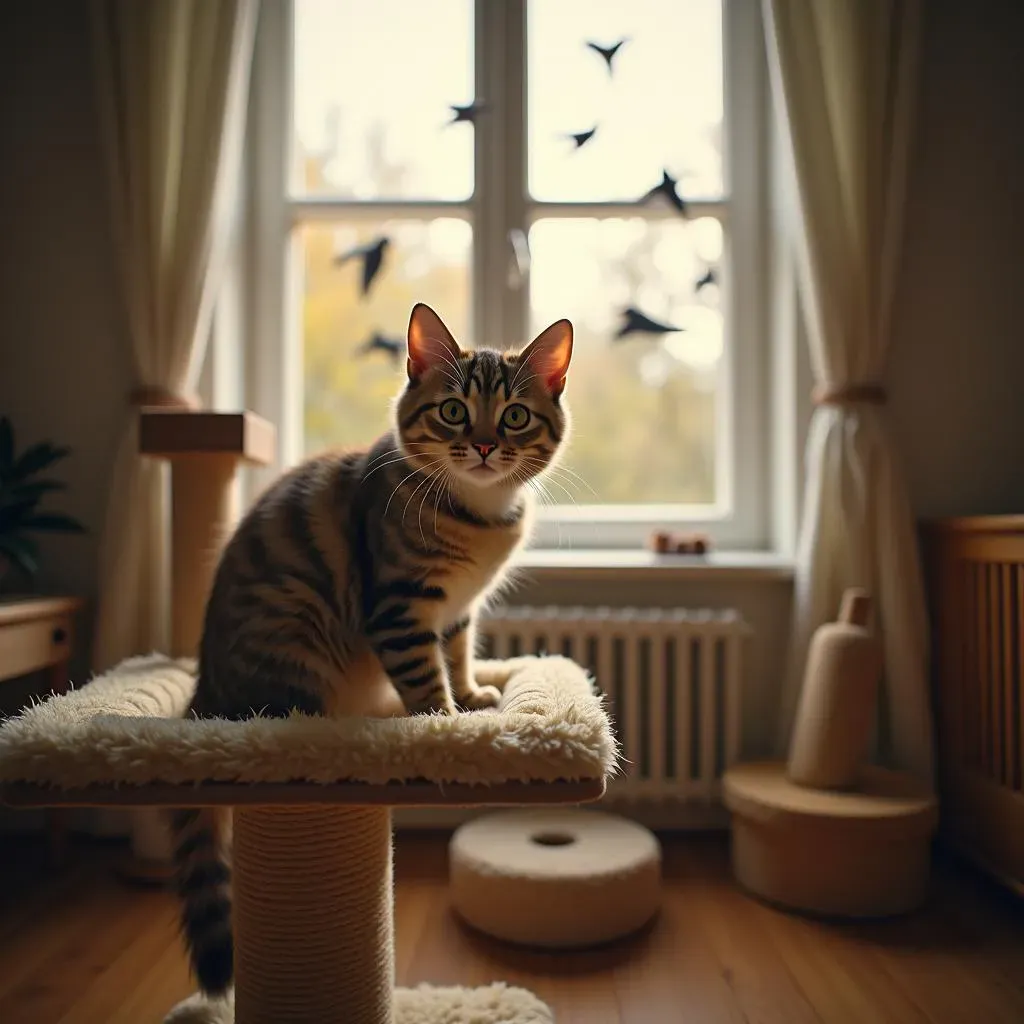
Why Cats Get Bored and the Importance of Enrichment
Understanding Feline Boredom
It's easy to assume cats are content just lounging around, but that's often far from the truth. Cats are natural hunters, and in the wild, they spend a significant portion of their day stalking, chasing, and catching prey. When they're cooped up indoors without an outlet for these instincts, boredom sets in. This isn't just a matter of them being a little restless; chronic boredom can lead to a host of behavioral and health problems.
Think of it this way: your cat's brain is wired for action. Without appropriate stimulation, that energy gets misdirected. You might see increased scratching on furniture, excessive grooming (which can lead to hairballs), or even aggression. Recognizing the signs of boredom, like decreased appetite or changes in sleep patterns, is the first step to helping your feline friend live a happier, more fulfilling life.
The Detrimental Effects of a Dull Life
A bored cat isn't just an unhappy cat; it's often an unhealthy one. Lack of mental and physical stimulation can contribute to obesity, which in turn increases the risk of diabetes, arthritis, and other serious health issues. Furthermore, boredom can manifest as anxiety and stress, weakening their immune system and making them more susceptible to illness. Providing enrichment is an investment in your cat's overall well-being, not just their entertainment.
Imagine being stuck inside all day with nothing to do. You'd probably start feeling pretty antsy, right? It's the same for your cat. They need opportunities to engage their minds and bodies to stay healthy and balanced. Enrichment isn't just about buying a few toys; it's about creating an environment that caters to their natural instincts and provides a sense of purpose.
Enrichment: More Than Just Playtime
Enrichment encompasses a wide range of activities and environmental modifications designed to stimulate a cat's senses and encourage natural behaviors. This goes beyond simply providing toys; it involves creating an environment that allows them to climb, scratch, explore, and hunt. Think vertical space like cat trees and shelves, scratching posts made of different materials, and interactive feeders that challenge them to work for their food.
It's also important to consider your cat's individual personality and preferences. Some cats are highly motivated by food, while others are more interested in chasing toys. Experiment with different types of enrichment to find what works best for your furry friend. The goal is to provide a variety of outlets for their energy and instincts, keeping them mentally and physically engaged throughout the day.
Examples of Enrichment Activities
- Rotating toys regularly to maintain novelty.
- Creating a window perch for birdwatching.
- Hiding treats around the house for them to find.
- Using puzzle feeders to slow down eating and provide mental stimulation.
- Providing scratching posts in various locations and materials.
Top Interactive Cat Toys to Combat Boredom
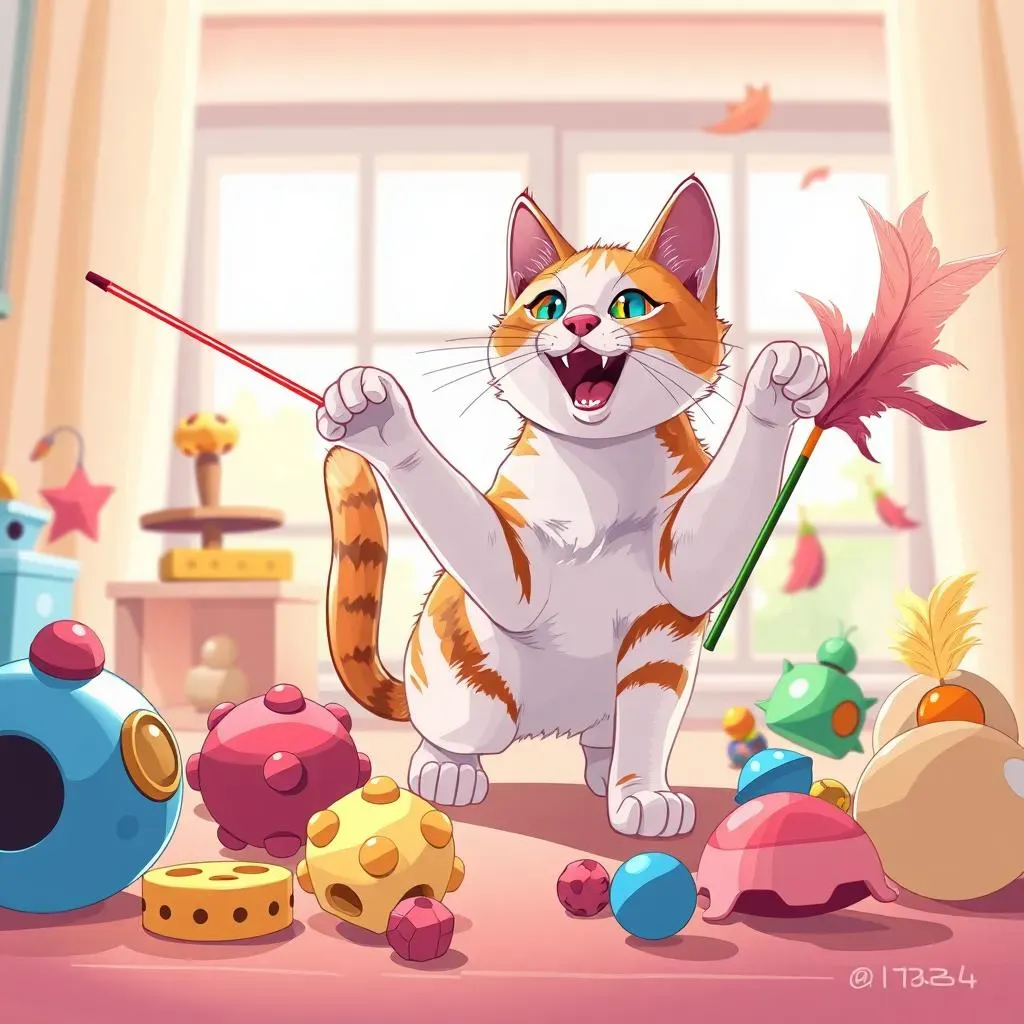
Top Interactive Cat Toys to Combat Boredom
Unleashing the Playful Hunter
When it comes to banishing boredom, interactive toys are your secret weapon. These aren't your average plush mice; we're talking about toys that actively engage your cat's hunting instincts, problem-solving skills, and physical agility. The goal is to mimic the thrill of the hunt, providing mental and physical stimulation that keeps them entertained for hours. Think about what your cat loves to do naturally – chase, pounce, bat, and explore – and choose toys that cater to those instincts. From laser pointers to puzzle toys, the options are endless, but not all toys are created equal. Let's dive into some of the best interactive cat toys on the market, and how they can help keep your feline friend happy and engaged.
The Allure of the Chase: Motion and Laser Toys
Cats are hardwired to chase moving objects, making motion and laser toys incredibly appealing. Laser pointers, while requiring supervision to avoid frustration (never shine it in their eyes!), can provide a burst of exhilarating activity. Battery-operated mice or balls that dart around on their own also tap into this instinct, encouraging your cat to stalk, pounce, and bat. The key is to vary the speed and direction of the toy's movement to keep them guessing and engaged. Remember to end the "hunt" with a tangible reward, like a treat or a physical toy they can catch, to avoid leaving them feeling unfulfilled.
I remember when I first got a laser pointer for my cat, Whiskers. He went absolutely bonkers! He'd chase that little red dot all over the house, leaping and twirling like a furry acrobat. It was hilarious to watch, and it definitely helped him burn off some energy. Just be careful not to overdo it, and always end the session with a real toy he can "capture."
Puzzle Power: Engaging Their Minds
Interactive puzzle toys take playtime to a whole new level by challenging your cat's problem-solving skills. These toys require them to manipulate levers, slide covers, or rotate compartments to access treats or kibble. This not only slows down their eating, which is great for digestion, but also provides mental stimulation that keeps them entertained and prevents boredom. Start with simple puzzles and gradually increase the difficulty as your cat becomes more adept. You'll be amazed at how quickly they learn to solve these challenges!
Here's a quick guide to different puzzle toy types:
Puzzle Toy Type | Description | Benefits |
|---|---|---|
Treat Mazes | Cats must navigate a maze to release treats. | Encourages problem-solving and slows down eating. |
Sliding Puzzles | Cats slide panels to reveal hidden treats. | Develops dexterity and mental acuity. |
Rolling Dispensers | Cats bat and roll the toy to release kibble. | Promotes activity and provides a reward. |
Puzzle Feeders and Treat Dispensers: Mental Stimulation for Cats
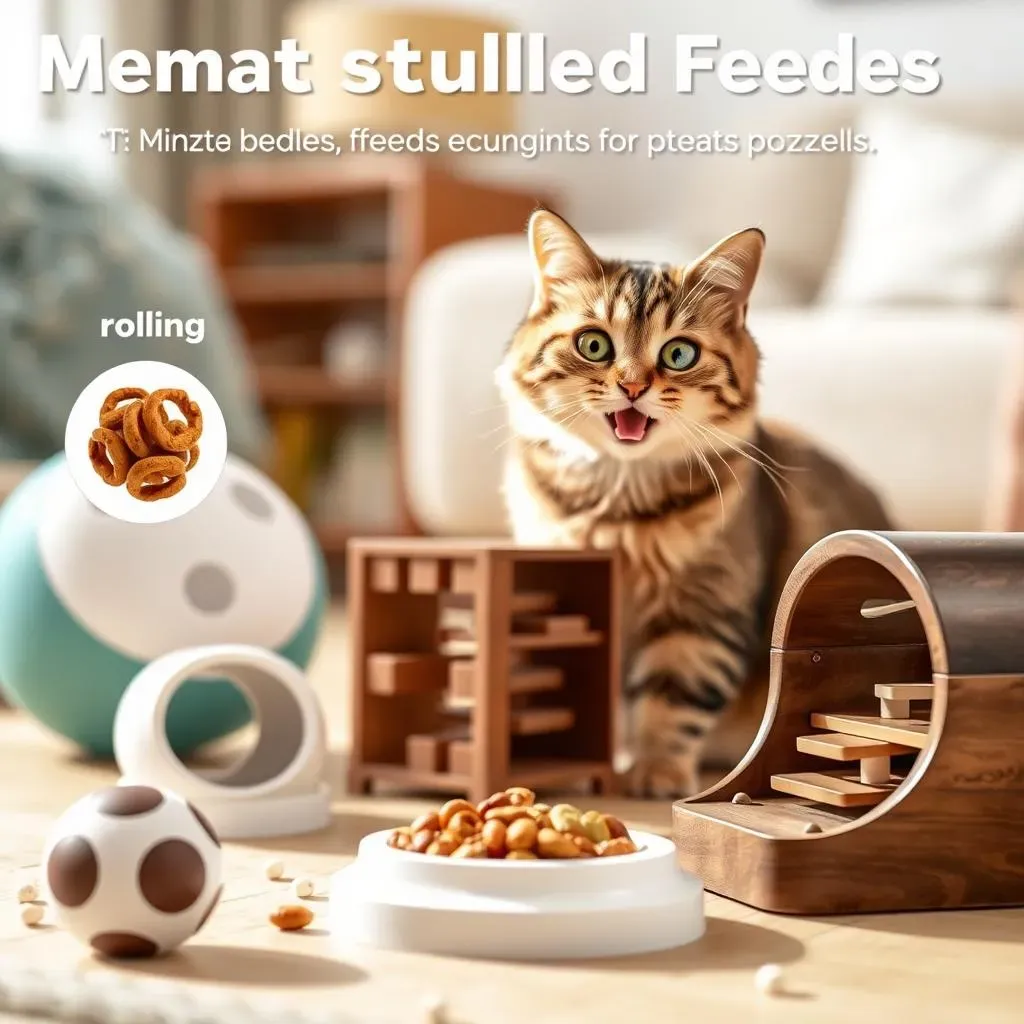
Puzzle Feeders and Treat Dispensers: Mental Stimulation for Cats
let's talk puzzle feeders and treat dispensers! If you're looking for a way to keep your cat entertained and mentally stimulated, these are absolute game-changers. Forget just dumping food in a bowl; these devices turn mealtime into a fun challenge. They're designed to make your cat work for their food, tapping into their natural hunting instincts and providing a sense of accomplishment. Plus, they can help prevent overeating by slowing down their feeding pace. It's a win-win! There's a huge variety out there, from simple rolling dispensers to complex puzzles that require serious problem-solving skills. Finding the right one depends on your cat's personality and experience with puzzles.
Think of it as giving your cat a job. Instead of just mindlessly munching, they have to figure out how to get the food out. This mental engagement can be incredibly enriching, especially for indoor cats who don't have a lot of other opportunities to exercise their minds. Plus, it's just plain fun to watch them figure it out! You'll be surprised at how clever they can be.
Choosing the Right Puzzle Feeder
With so many options available, picking the right puzzle feeder can feel overwhelming. Start by considering your cat's personality and experience level. If they're new to puzzles, begin with something simple, like a rolling dispenser or a treat ball. These require minimal effort and provide immediate rewards, helping to build confidence. As they become more adept, you can gradually introduce more complex puzzles that require them to manipulate levers, slide covers, or rotate compartments. It's also important to consider the size and shape of the kibble you use. Make sure it's compatible with the puzzle feeder to avoid frustration.
Also, think about the material. Some cats are rougher than others, so you want something durable that can withstand some enthusiastic pawing. Plastic is a common choice, but be sure it's BPA-free and easy to clean. You might even consider a ceramic or stainless steel option for a more hygienic and long-lasting solution.
Types of Puzzle Feeders and Treat Dispensers
Let's break down some of the most popular types of puzzle feeders and treat dispensers:
- Rolling Dispensers: These are simple balls or cylinders that release kibble as your cat bats and rolls them around. They're great for beginners and encourage physical activity.
- Treat Mazes: These feature a maze-like structure that your cat must navigate to access the treats. They're more challenging than rolling dispensers and require more problem-solving skills.
- Sliding Puzzles: These involve sliding panels or covers to reveal hidden treats. They're excellent for developing dexterity and mental acuity.
- Interactive Feeders: These can range from simple bowls with obstacles to complex devices with multiple compartments and levers. They offer a high level of mental stimulation and are ideal for cats who are easily bored.
Tips for Introducing Puzzle Feeders
Introducing a puzzle feeder to your cat should be a gradual process. Start by placing the puzzle feeder next to their regular bowl, filled with their usual food. Let them investigate it at their own pace. Once they seem comfortable, try sprinkling a few treats or kibble around the puzzle feeder to entice them to interact with it. Gradually, start placing more and more of their food inside the puzzle feeder, until it becomes their primary feeding method. Be patient and encouraging, and don't get discouraged if they don't figure it out right away. Some cats take longer than others to adjust.
If your cat is struggling, you can make it easier by removing some of the obstacles or providing hints. You can also try using high-value treats to motivate them. The key is to make it a positive experience. Never force your cat to use the puzzle feeder, and always provide plenty of praise and encouragement when they succeed.
Tip | Description |
|---|---|
Start Simple | Begin with easy puzzles to build confidence. |
Use High-Value Treats | Motivate your cat with their favorite rewards. |
Be Patient | Allow your cat to learn at their own pace. |
Make it Fun | Keep the experience positive and rewarding. |
DIY Cat Toys: BudgetFriendly Boredom Busters
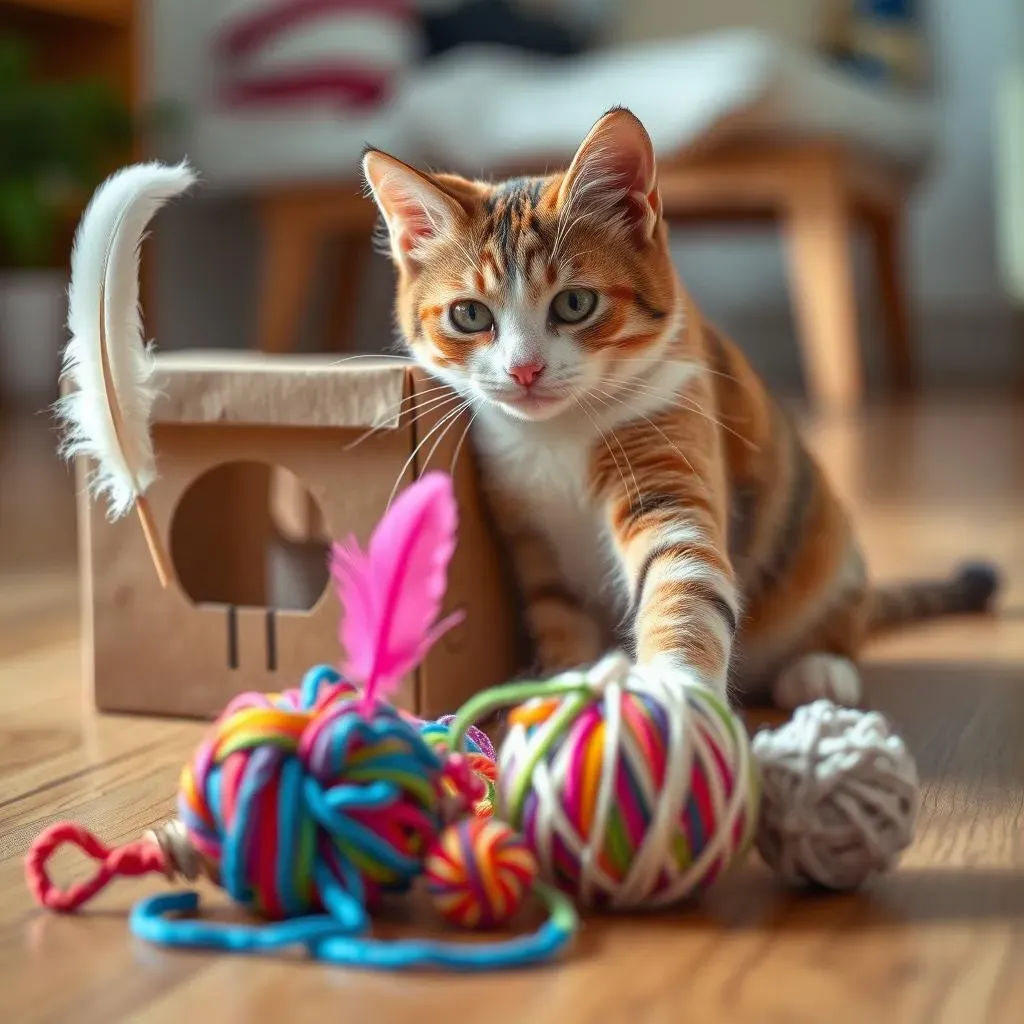
DIY Cat Toys: BudgetFriendly Boredom Busters
Unleash Your Inner Crafter: DIY Cat Toy Edition
let's be real, those fancy cat toys can get expensive! But guess what? You don't need to break the bank to keep your kitty entertained. The beauty of cats is that they're often just as happy with simple, homemade toys. Plus, DIY cat toys are a fantastic way to repurpose household items and reduce waste. We're talking about turning cardboard boxes, socks, and even toilet paper rolls into hours of feline fun. Not only is it budget-friendly, but you also get the satisfaction of knowing you created something special for your furry friend. And who knows, you might even discover your own hidden crafting talents in the process!
I mean, seriously, have you ever seen a cat NOT go crazy for a cardboard box? It's like they're genetically programmed to love them. And that's just the beginning. With a little creativity, you can transform everyday objects into engaging toys that will keep your cat entertained for hours. So, grab your scissors, glue, and a sense of adventure, and let's get crafting!
Simple Toys, Big Fun
You don't need to be a master craftsman to create amazing cat toys. Some of the most popular DIY options are incredibly simple to make. Take the classic sock toy, for example. Just fill an old sock with catnip, tie it off, and voila! You've got a plush, enticing toy that your cat will love to bat around. Or how about a toilet paper roll treat dispenser? Simply cut a few holes in the roll, fold in the ends, and fill it with kibble. Your cat will have to work to get the treats out, providing both mental and physical stimulation.
Another easy option is a feather wand. Attach a few feathers to a stick or dowel rod with string or glue, and you've got an interactive toy that's perfect for playtime. Just be sure to supervise your cat while they're playing with it to prevent them from swallowing any of the feathers. The possibilities are endless! The key is to use your imagination and think about what your cat enjoys. Do they like to chase things? Do they like to scratch? Do they like to chew? Tailor your DIY toys to their specific preferences.
Here are a few more ideas to get you started:
- Cardboard Box Fort: Cut holes in a cardboard box to create a fun and engaging playhouse.
- Crinkle Ball: Crumple up a piece of aluminum foil into a ball for a noisy and enticing toy.
- Yarn Ball: Wrap yarn around a ball of paper or foil for a soft and textured toy.
Safety First!
While DIY cat toys are a great way to save money and have fun, it's important to prioritize safety. Always use non-toxic materials and avoid small parts that could be swallowed. Check your toys regularly for wear and tear, and discard them if they become damaged. Supervise your cat while they're playing with DIY toys, especially those that contain string, feathers, or small objects. And never use rubber bands or plastic bags, as these can be dangerous if ingested.
Also, be mindful of any allergies your cat may have. If you're using fabric or yarn, make sure it's made from a material that won't irritate their skin. And if you're using catnip, start with a small amount to see how your cat reacts. Some cats are highly sensitive to catnip, while others are completely indifferent. The key is to be cautious and observant, and to always put your cat's safety first.
Safety Tip | Description |
|---|---|
Non-Toxic Materials | Use only safe, non-toxic materials for your DIY toys. |
No Small Parts | Avoid small parts that could be swallowed. |
Regular Inspection | Check toys regularly for wear and tear. |
Supervision | Supervise your cat while they're playing with DIY toys. |
Creating an Engaging Environment to Prevent Cat Boredom
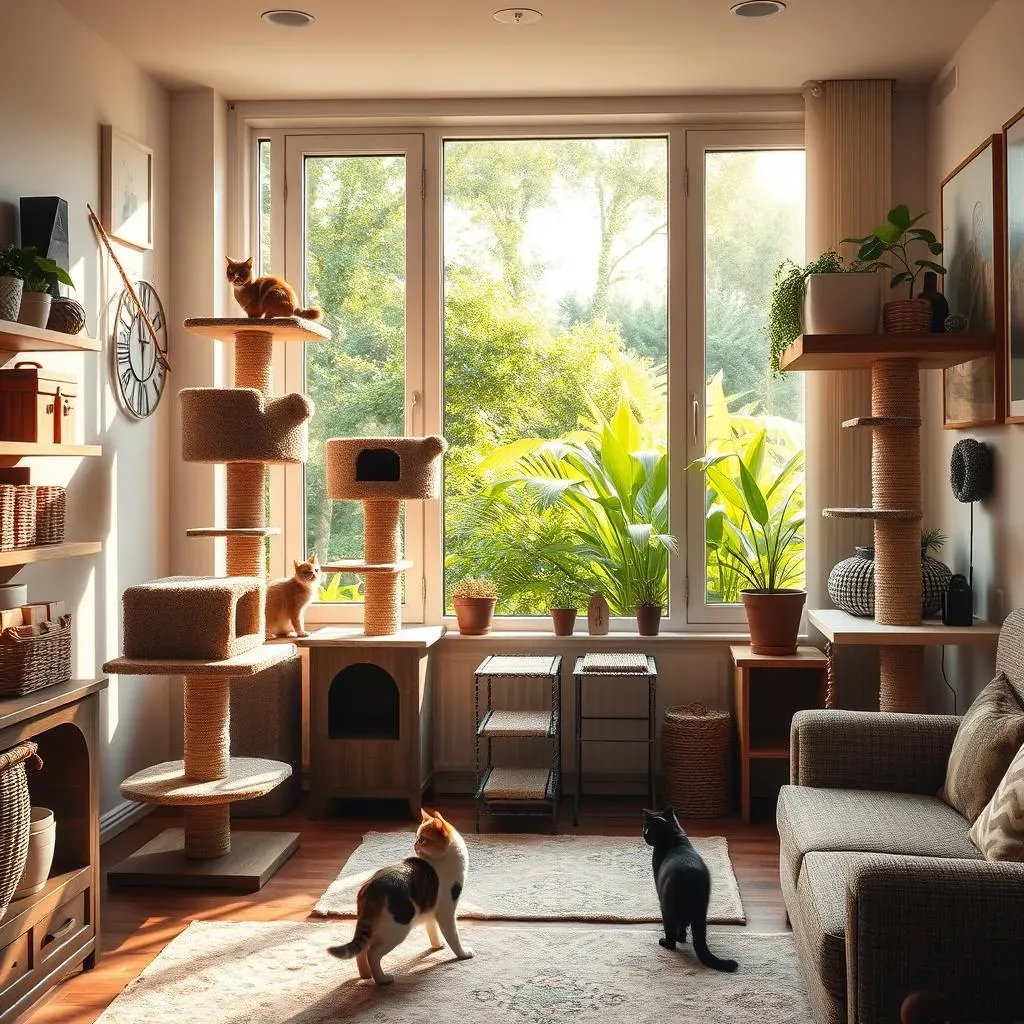
Creating an Engaging Environment to Prevent Cat Boredom
Think Like a Cat: Vertical Space is Key
One of the most effective ways to combat cat boredom is to create a stimulating environment that caters to their natural instincts. And what's the first thing that comes to mind when you think of a cat's natural habitat? Trees! Cats love to climb, perch, and survey their surroundings from a high vantage point. So, incorporating vertical space into your home is crucial. This could be as simple as installing a cat tree, or as elaborate as creating a series of shelves that allow your cat to traverse the room at different levels.
Think about it: in the wild, cats use trees to escape predators, observe prey, and establish their territory. By providing them with similar opportunities indoors, you're not just preventing boredom, you're also making them feel more secure and confident. Plus, it's just plain fun to watch them explore their elevated domain!
Scratching Posts: More Than Just Furniture Protection
Scratching is a natural and essential behavior for cats. It helps them to sharpen their claws, stretch their muscles, and mark their territory. Providing appropriate scratching surfaces is not only crucial for protecting your furniture, but also for preventing boredom and frustration. Offer a variety of scratching posts in different materials, such as sisal, cardboard, and wood, to cater to your cat's preferences. Place them in prominent locations throughout your home, especially near areas where your cat likes to sleep or play.
Remember, scratching is not just about maintaining their claws; it's also a form of communication. Cats have scent glands in their paws, and when they scratch, they're leaving behind a visual and olfactory message for other cats (or even for you!). By providing them with designated scratching areas, you're allowing them to express this natural behavior in a healthy and appropriate way.
Scratching Post Type | Material | Benefits |
|---|---|---|
Vertical Post | Sisal, carpet | Allows for full-body stretch. |
Horizontal Pad | Cardboard, sisal | Satisfies ground-scratching instincts. |
Angled Scratcher | Wood, carpet | Provides a variety of scratching angles. |
Window Views: Entertainment Without the Effort
Sometimes, the simplest things can provide the most entertainment. Cats are naturally curious creatures, and they love to watch the world go by. Providing them with access to a window view can be a great way to keep them engaged and prevent boredom. Set up a comfortable perch near a window, whether it's a cat tree, a window seat, or even just a strategically placed cushion. Your cat will spend hours watching birds, squirrels, and other outdoor activities, providing them with mental stimulation and a sense of connection to the outside world.
If possible, choose a window that offers a variety of sights and sounds. A window overlooking a garden, a bird feeder, or a busy street can be particularly engaging. You can also add elements to the view to make it even more interesting, such as hanging a bird feeder or planting cat-friendly herbs in a window box. The goal is to create a dynamic and stimulating environment that keeps your cat entertained and prevents boredom.
Conclusion: Banishing Boredom and Boosting Your Cat's Well-being
Combating cat boredom is an ongoing journey, not a one-time fix. By incorporating a variety of the best cat toys for boredom and enrichment strategies discussed, you can significantly improve your feline friend's quality of life. Remember to observe your cat's preferences, rotate toys regularly to maintain their interest, and dedicate time for interactive play. A stimulated cat is a happy cat, leading to a stronger bond between you and your beloved companion. So, go ahead, experiment with different options, and watch your kitty thrive!